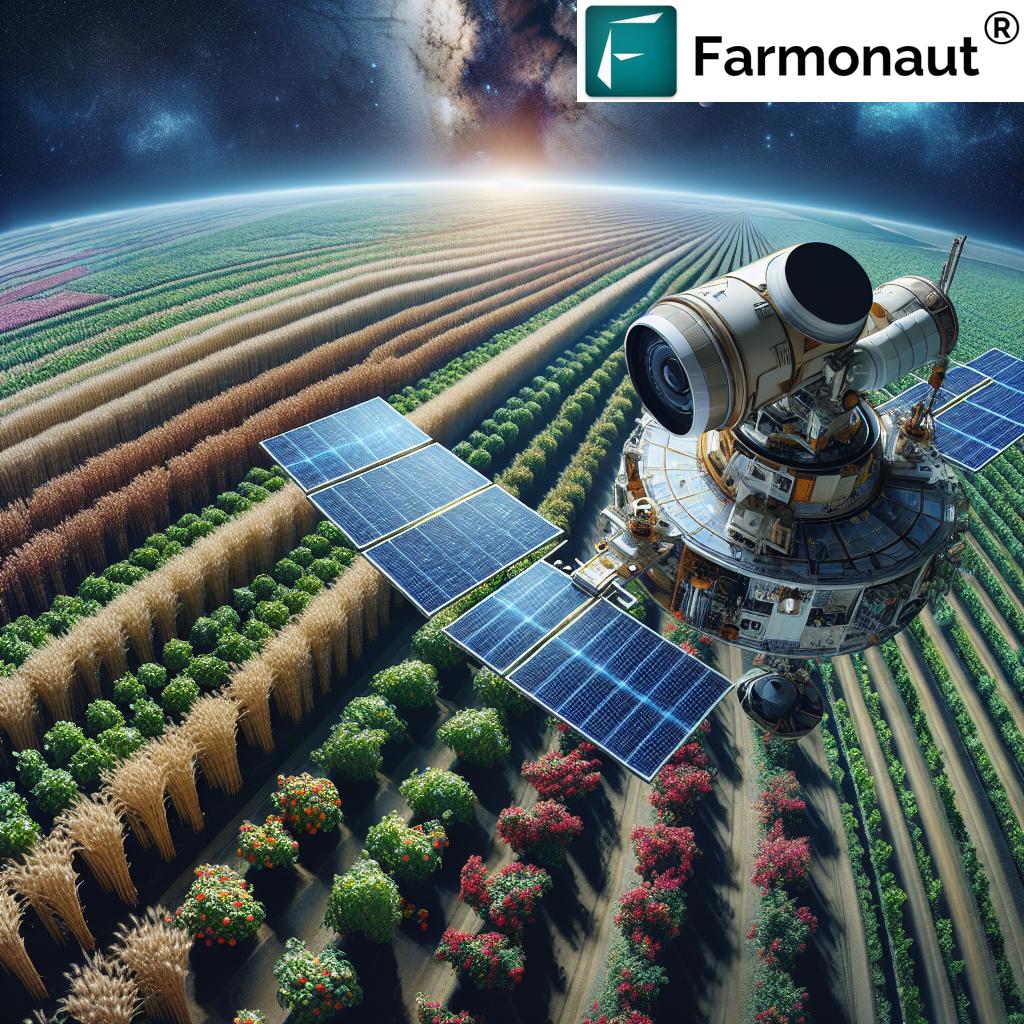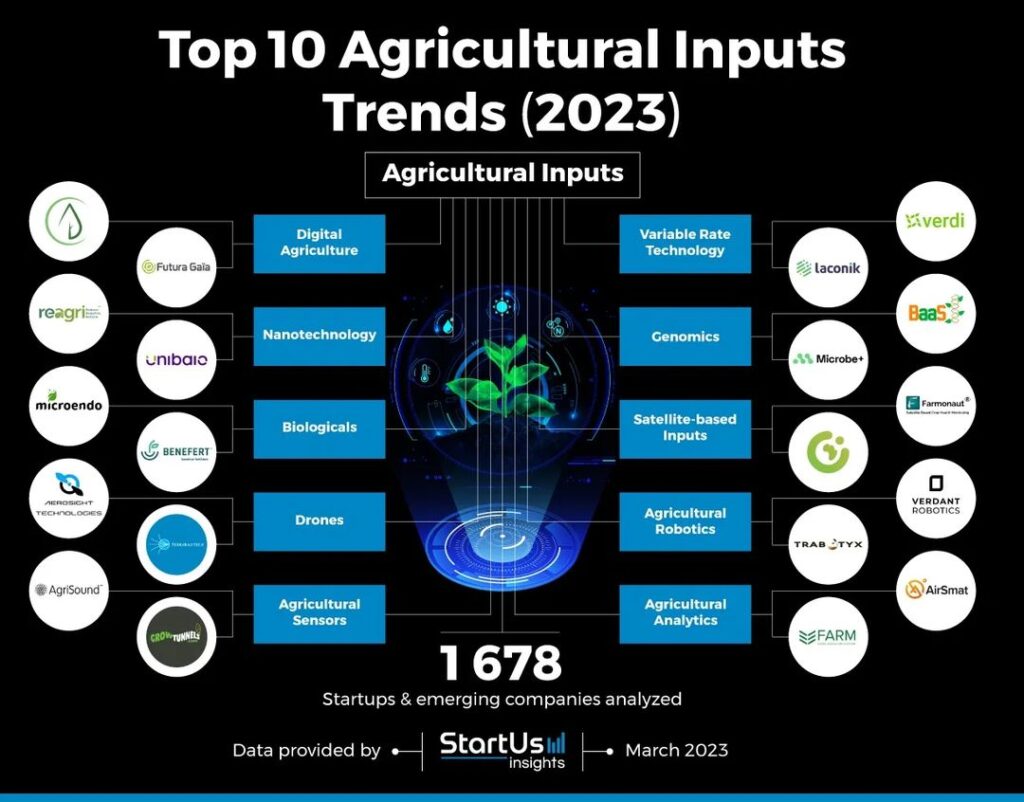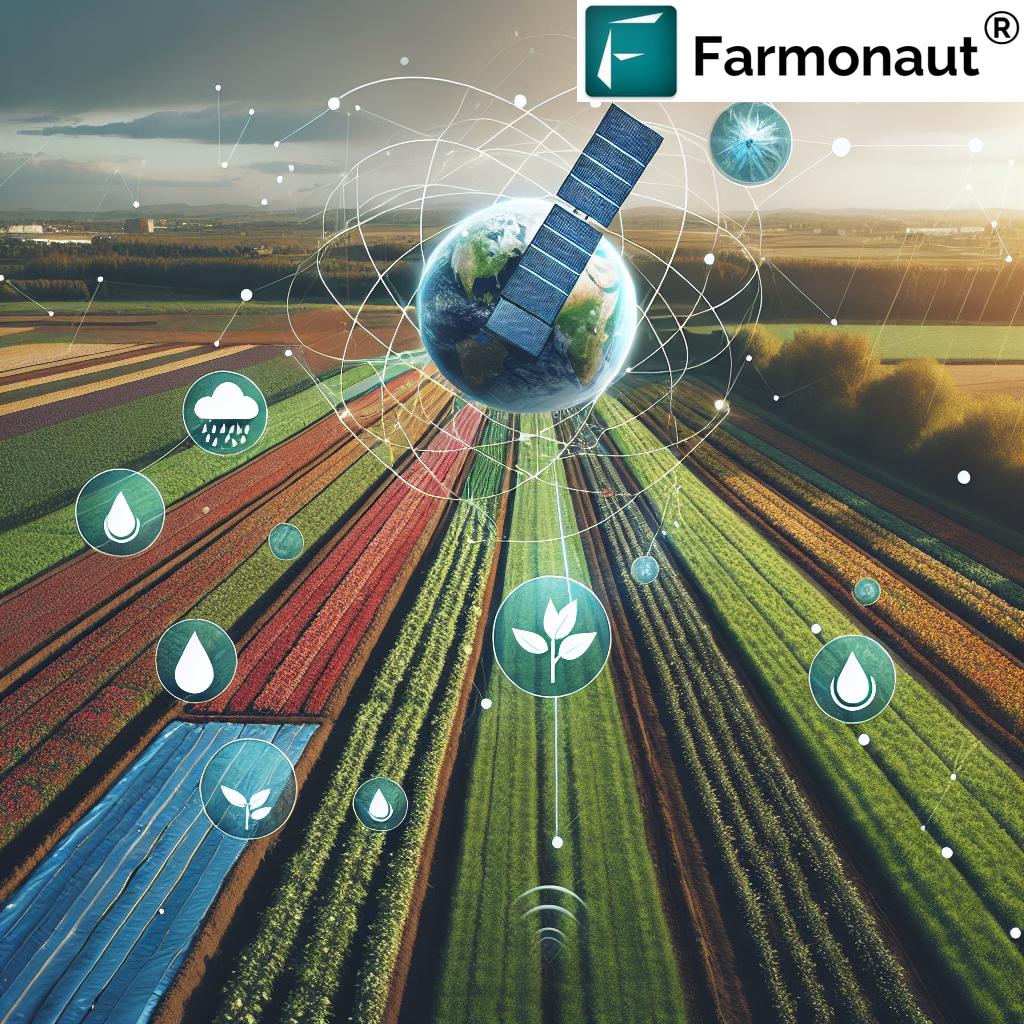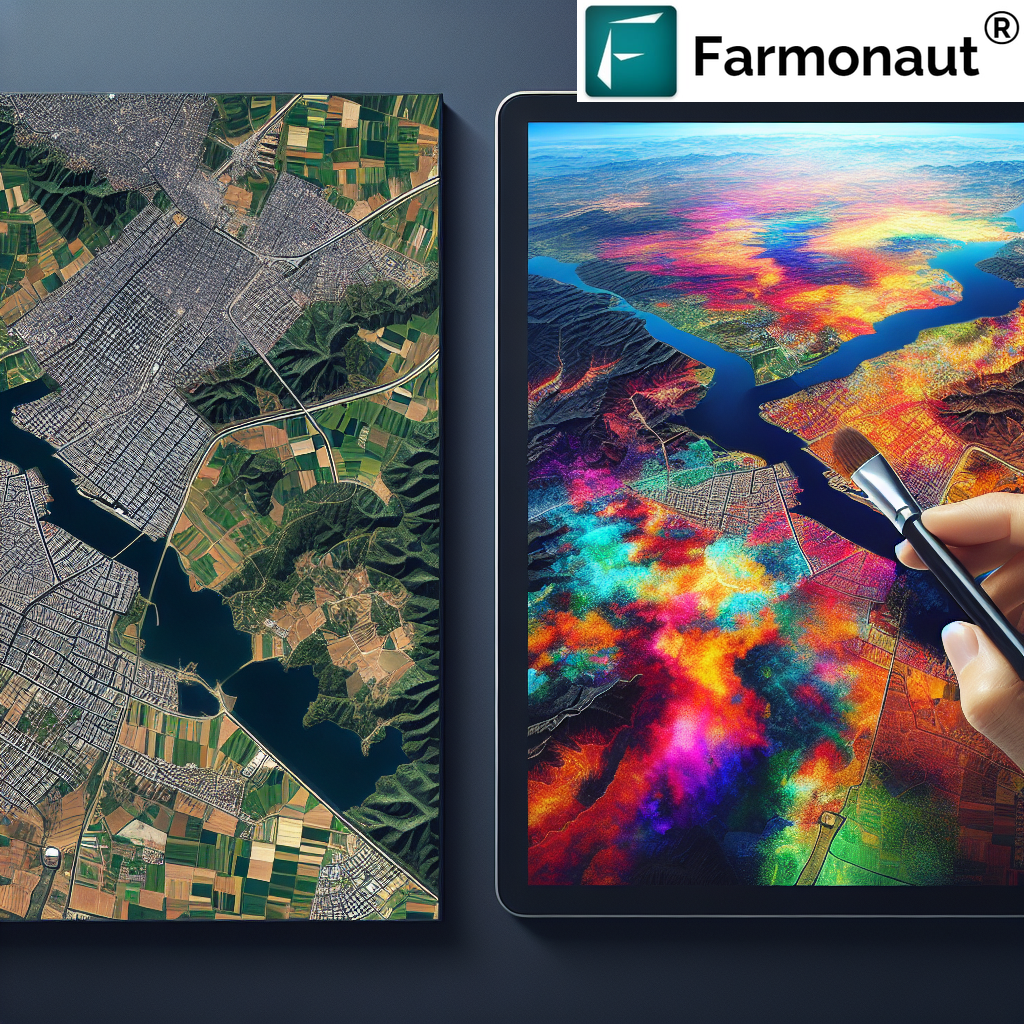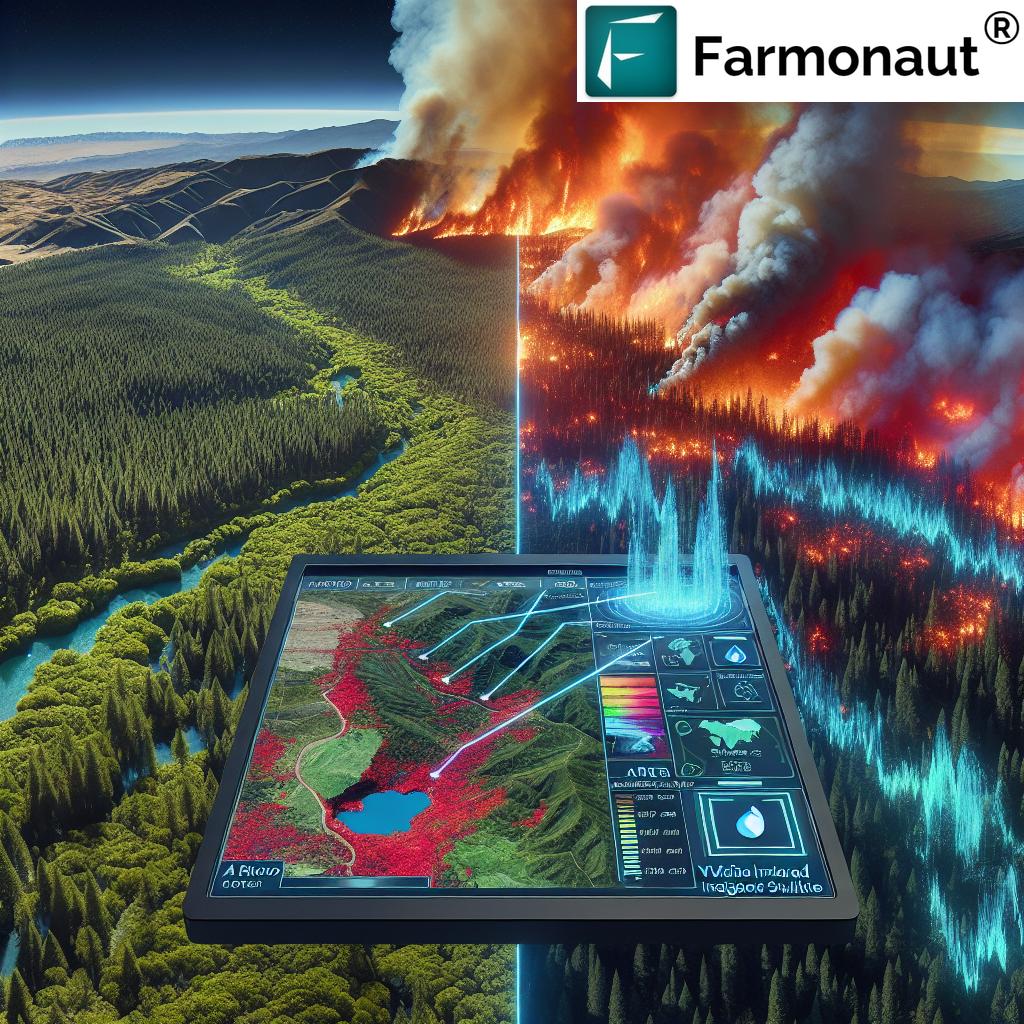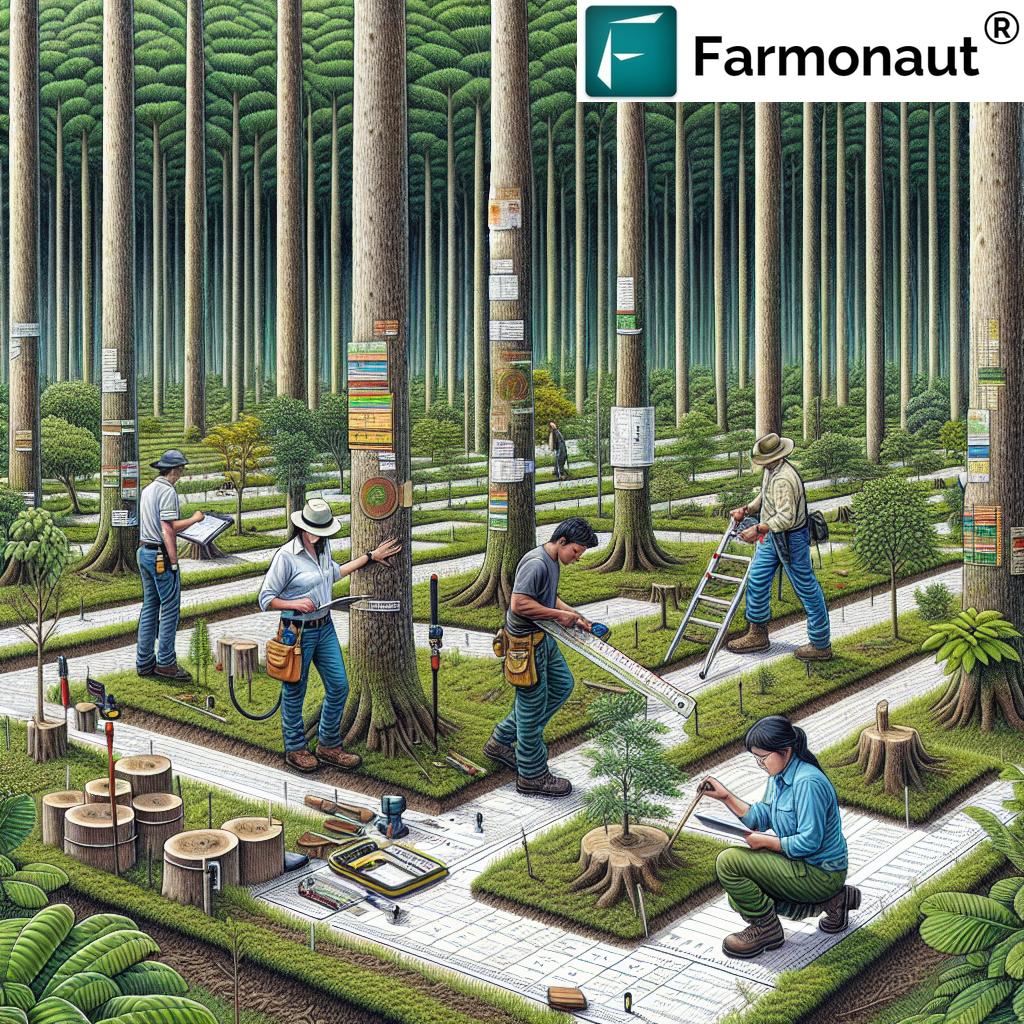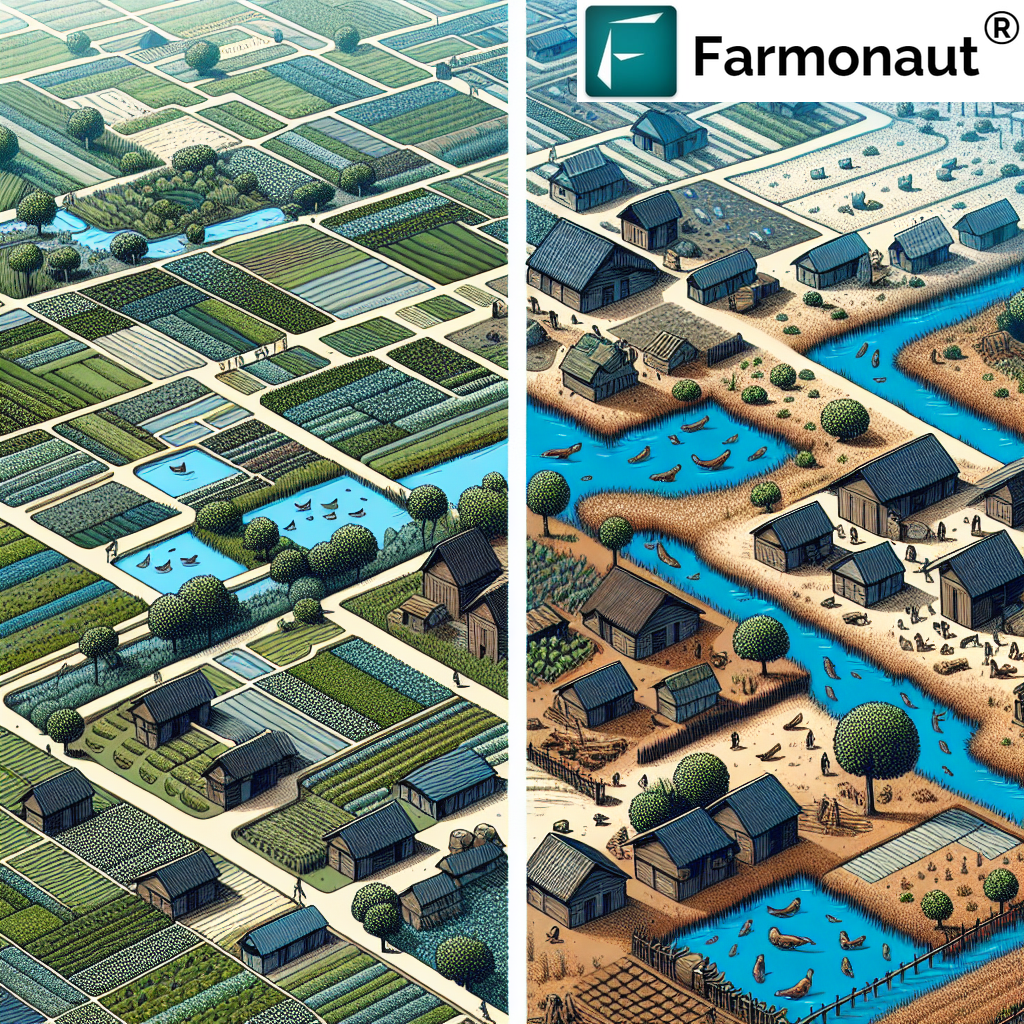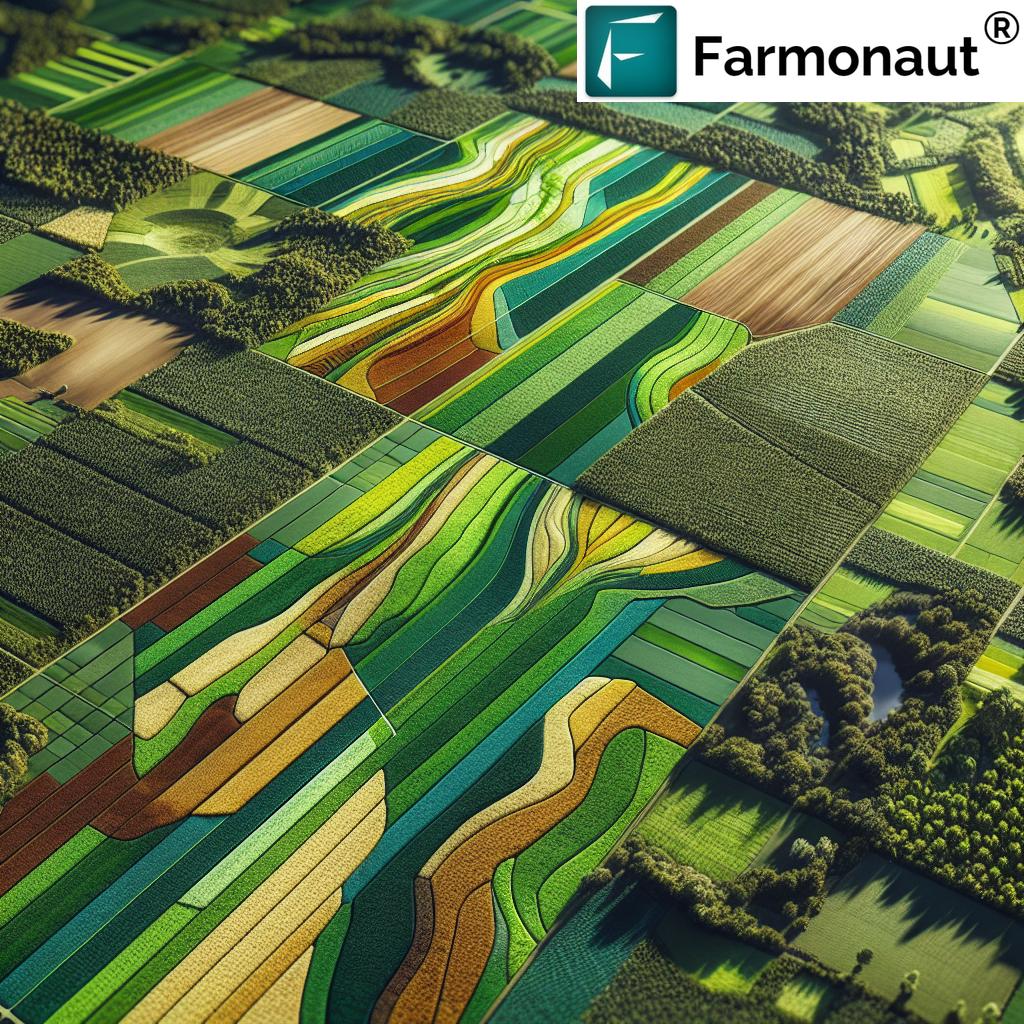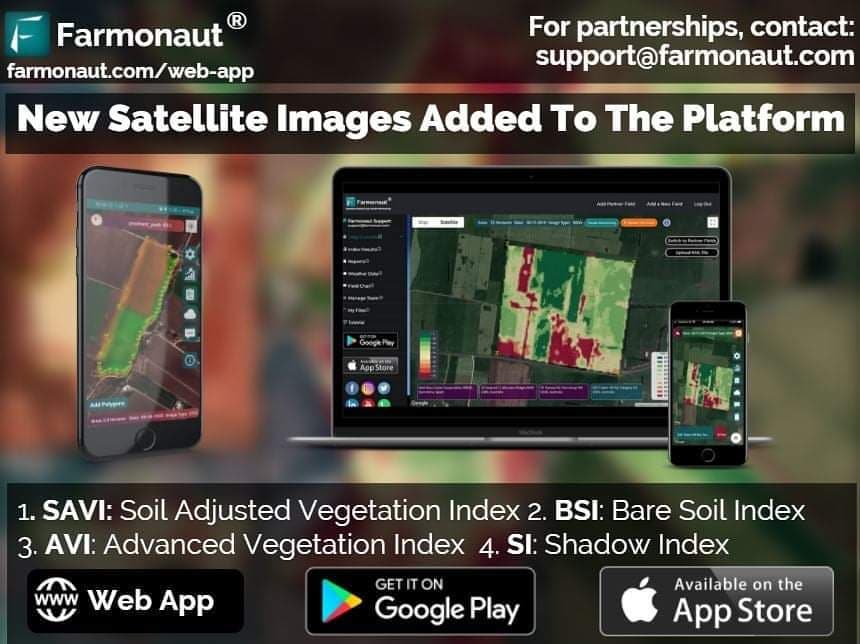Revolutionizing Australian Vineyards: How GIS and Remote Sensing Drive Sustainable Viticulture in South Australia
“South Australian vineyards using GIS and remote sensing have reduced water usage by up to 30% while maintaining grape quality.”
Welcome to the cutting-edge world of sustainable viticulture in South Australia, where tradition meets technology to produce some of the finest wines in the world. In this comprehensive exploration, we’ll delve into how Geographic Information Systems (GIS) and remote sensing are transforming vineyard management and driving innovation in the Australian wine industry.
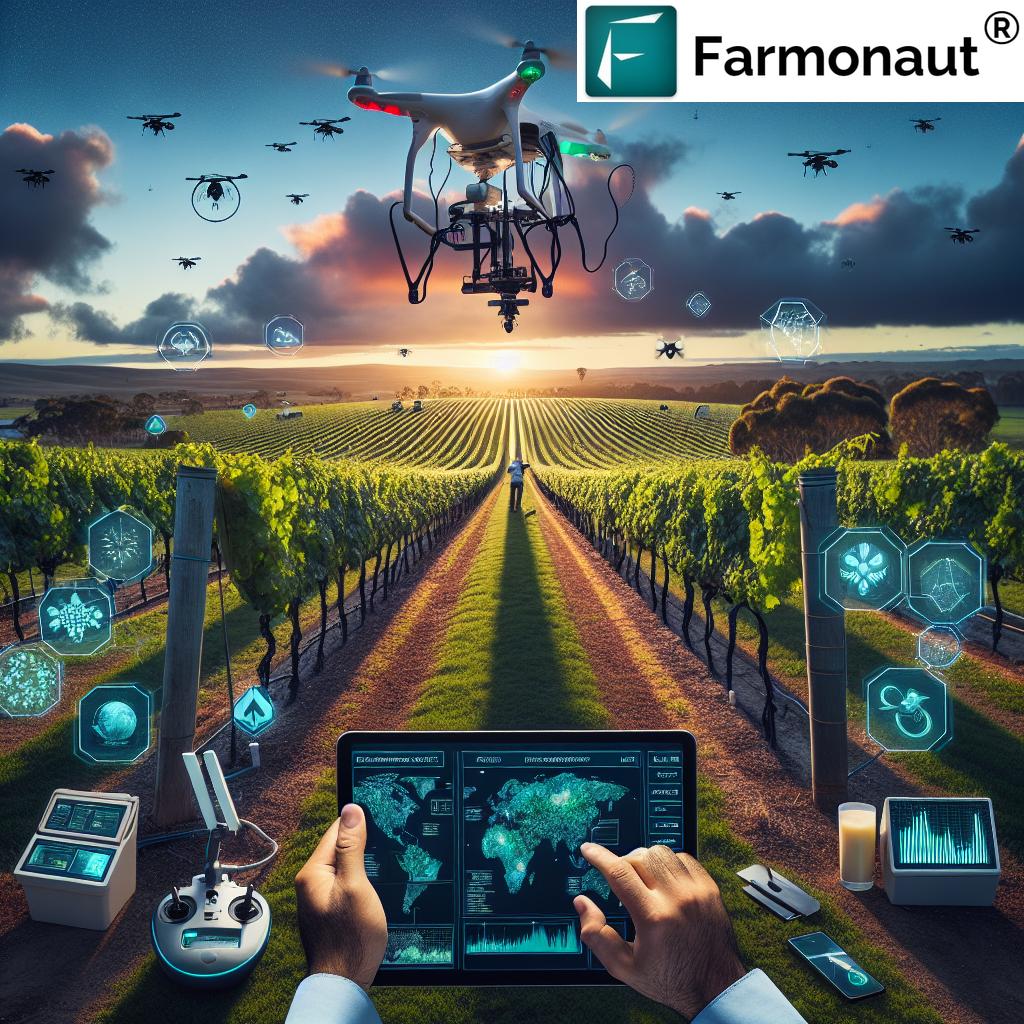
The Intersection of Technology and Tradition in South Australian Vineyards
South Australia, particularly regions like Adelaide and the Barossa Valley, has long been renowned for its exceptional wines. However, the industry faces new challenges in the 21st century, from climate change to market demands for sustainable practices. This is where precision agriculture and sustainable viticulture come into play, revolutionizing how we grow grapes and produce wine.
GIS and remote sensing technologies are at the forefront of this revolution, offering vintners unprecedented insights into their vineyards. These tools allow for detailed vineyard management, from monitoring soil composition to tracking grapevine health with pinpoint accuracy.
GIS in Viticulture: Mapping the Future of Wine
Geographic Information Systems (GIS) have become indispensable in modern viticulture. Here’s how they’re transforming vineyard operations in South Australia:
- Terroir Analysis: GIS allows for precise mapping of soil types, elevations, and microclimates within a vineyard. This detailed wine terroir analysis helps winemakers optimize grape varieties for specific locations.
- Resource Management: By overlaying various data layers, vintners can efficiently plan irrigation systems, reducing water waste and ensuring optimal grape development.
- Harvest Planning: GIS tools help predict ideal harvest times based on accumulated data, ensuring grapes are picked at peak ripeness.
The integration of GIS in South Australian vineyards has led to more informed decision-making and improved wine quality. For instance, in the McLaren Vale region, GIS mapping has helped winemakers identify the best locations for planting heat-resistant grape varieties, adapting to changing climate conditions.
Remote Sensing: Eyes in the Sky for Vineyard Health
Remote sensing for vineyards involves using satellite or drone imagery to monitor crop health and vineyard conditions. This technology offers several benefits:
- Early Disease Detection: Multispectral imaging can identify signs of grapevine diseases before they’re visible to the naked eye, allowing for timely interventions.
- Water Stress Monitoring: By analyzing vegetation indices, remote sensing helps vintners optimize irrigation, crucial in water-scarce regions of South Australia.
- Yield Estimation: Advanced algorithms can predict grape yields with increasing accuracy, aiding in harvest planning and market forecasting.
Companies like Farmonaut are at the forefront of this technological revolution, offering satellite-based farm management solutions that make precision agriculture accessible to vineyards of all sizes.
Climate Change and Its Impact on South Australian Vineyards
The climate impact on vineyards in South Australia is becoming increasingly evident. Rising temperatures and changing rainfall patterns are altering growing conditions, affecting grape quality and wine characteristics. Here’s how the industry is responding:
- Varietal Adaptation: Winemakers are experimenting with grape varieties better suited to warmer conditions, such as heat-tolerant clones of Shiraz and Cabernet Sauvignon.
- Canopy Management: Advanced techniques in vine training and leaf removal help protect grapes from excessive sun exposure.
- Harvest Timing: GIS and remote sensing data are used to determine optimal harvest dates, balancing sugar levels and acidity in a changing climate.
These adaptive strategies are crucial for maintaining the quality and character of South Australian wines in the face of climate change.
Innovative Water Management Strategies
Water scarcity is a pressing concern in many Australian wine regions. Vineyard water management has become a top priority, with technologies like GIS and remote sensing playing a vital role:
- Precision Irrigation: Satellite data and soil moisture sensors guide targeted irrigation, reducing water usage while maintaining grape quality.
- Drought-Resistant Rootstocks: Research into rootstock genetics is helping develop vines that require less water without compromising wine quality.
- Water Recycling: Advanced winery systems are implementing water recycling techniques, minimizing overall water consumption in wine production.
These water-saving measures not only ensure the sustainability of vineyards but also contribute to the overall ecological balance of South Australia’s wine regions.
The Rise of Organic Wine Production in Australia
“Organic wine production in Australia has grown by 120% in the last decade, driven by sustainable viticulture practices.”
The demand for organic wine production has surged in recent years, with South Australia leading the charge. This shift towards organic practices is driven by several factors:
- Consumer Preferences: Growing awareness of environmental issues has increased demand for sustainably produced wines.
- Soil Health: Organic practices improve soil biodiversity and structure, enhancing the terroir expression in wines.
- Pest Management: Natural pest control methods reduce the need for chemical interventions, preserving the ecosystem balance in vineyards.
Organic certification bodies in Australia have reported a significant increase in the number of vineyards transitioning to organic practices, particularly in regions like McLaren Vale and the Adelaide Hills.
Challenges and Opportunities in Organic Viticulture
While the shift to organic production presents numerous benefits, it also comes with its own set of challenges:
- Disease Management: Organic vineyards must rely on preventive measures and natural treatments to combat grapevine diseases.
- Yield Variations: Organic practices can lead to more variable yields, requiring careful planning and market strategies.
- Certification Process: The transition to organic certification can be time-consuming and costly, but the long-term benefits often outweigh these initial hurdles.
Despite these challenges, the growing market for organic wines presents significant opportunities for South Australian vintners. Many are finding that organic practices not only improve wine quality but also open doors to new export markets.
Explore Farmonaut’s Satellite API for advanced vineyard monitoring
Unraveling the Secrets of Wine Terroir Analysis
Wine terroir analysis is a crucial aspect of viticulture that has been revolutionized by GIS and remote sensing technologies. In South Australia, these tools are helping winemakers understand and optimize their terroir like never before:
- Soil Composition Mapping: Detailed soil maps created through GIS help vintners match grape varieties to ideal soil types.
- Microclimate Analysis: Remote sensing data provides insights into temperature variations and sun exposure across vineyards.
- Topographical Influence: GIS tools analyze how slope and aspect affect grape growing conditions, influencing planting decisions.
This advanced terroir analysis is particularly beneficial for iconic South Australian varieties like Shiraz and Cabernet Sauvignon, allowing winemakers to harness the full potential of their land.
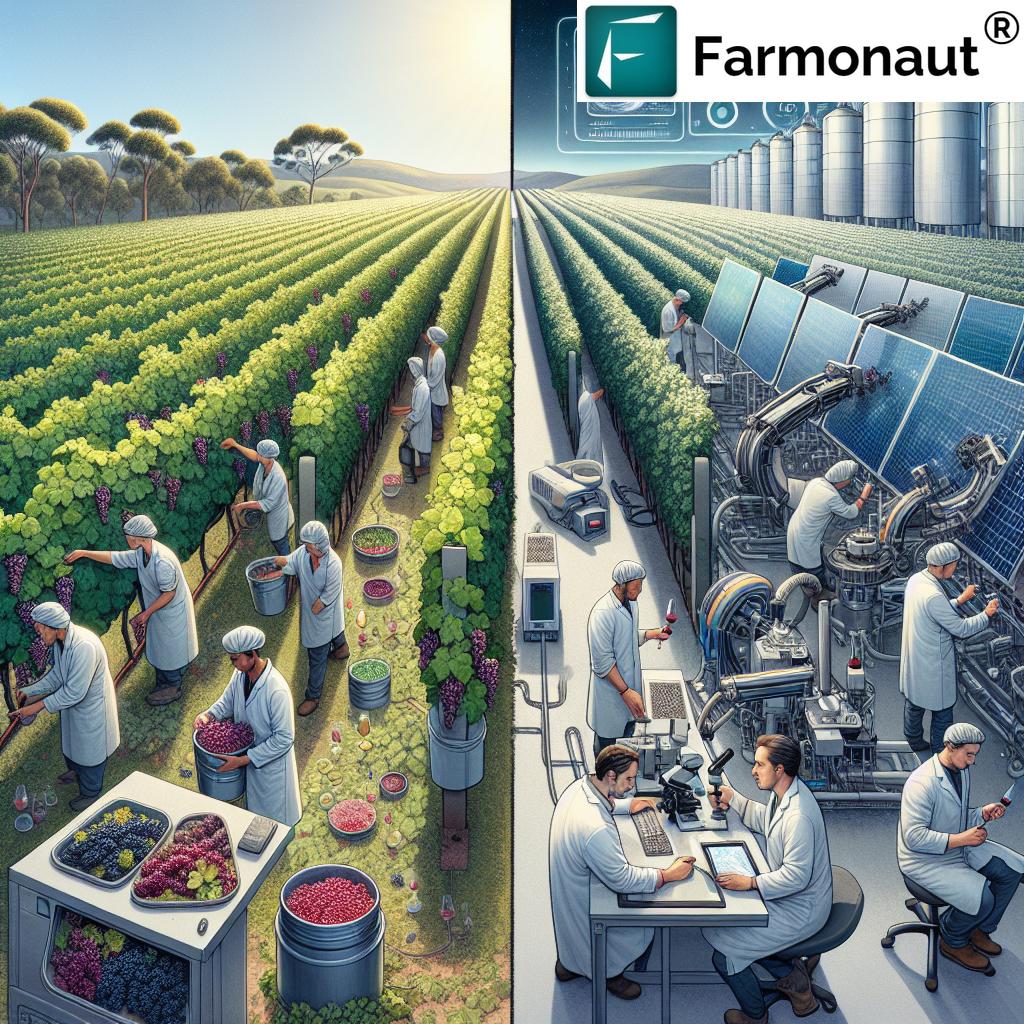
The Impact of Soil Composition on Grape Varieties
Understanding soil composition for grapes is crucial in producing high-quality wines. Different grape varieties thrive in specific soil types:
- Shiraz: Often performs best in well-draining, iron-rich soils common in parts of the Barossa Valley.
- Cabernet Sauvignon: Prefers gravel-rich soils that provide excellent drainage, such as those found in Coonawarra.
- Riesling: Thrives in the slate soils of the Clare Valley, contributing to the wine’s distinctive minerality.
GIS technology allows vintners to map these soil variations with unprecedented precision, optimizing grape planting and enhancing wine characteristics.
Cutting-Edge Research on Grapevine Diseases
The fight against grapevine diseases is an ongoing challenge in viticulture. South Australian researchers are at the forefront of developing innovative solutions:
- Early Detection Systems: Remote sensing technologies are being used to identify disease symptoms before they become visible to the human eye.
- Genetic Research: Studies on disease-resistant Vitis vinifera varieties are showing promising results in combating common vine ailments.
- Biological Control Agents: Research into beneficial microorganisms is opening new avenues for natural disease management in vineyards.
These advancements are crucial in maintaining the health and productivity of South Australian vineyards, especially as climate change alters disease patterns and pressures.
Access Farmonaut’s API Developer Docs for integrating vineyard monitoring solutions
Sustainable Winemaking Practices Shaping the Future
Sustainable winemaking practices are becoming increasingly important in South Australia’s wine industry. These practices extend beyond the vineyard and into the winery itself:
- Energy Efficiency: Wineries are adopting solar power and energy-efficient equipment to reduce their carbon footprint.
- Water Conservation: Advanced filtration systems allow for water recycling in winery operations, significantly reducing water usage.
- Waste Management: Innovative approaches to managing grape pomace and other winery waste are creating new revenue streams and reducing environmental impact.
These sustainable practices not only benefit the environment but also often result in cost savings for wineries, making them economically viable in the long term.
Low Alcohol Wine Production: A Growing Trend
Low alcohol wine production is gaining traction in South Australia, driven by changing consumer preferences and health consciousness. Here’s how winemakers are adapting:
- Viticultural Techniques: Adjusting canopy management and harvest timing to control sugar levels in grapes.
- Fermentation Control: Using specialized yeast strains and temperature control to manage alcohol production during fermentation.
- Technological Innovations: Exploring membrane filtration and other methods to reduce alcohol content without compromising flavor.
This trend presents both challenges and opportunities for South Australian winemakers, requiring a delicate balance between maintaining wine quality and meeting market demands.
Carbon Emissions Reduction in Winemaking
Reducing carbon emissions in winemaking is becoming a priority for environmentally conscious producers in South Australia. Strategies include:
- Renewable Energy: Installing solar panels and wind turbines to power winery operations.
- Sustainable Packaging: Switching to lighter bottles and eco-friendly packaging materials to reduce transport emissions.
- Carbon Sequestration: Implementing practices that enhance soil carbon storage in vineyards.
Many South Australian wineries are now participating in carbon offset programs and seeking carbon-neutral certification, positioning themselves as leaders in sustainable wine production.
Australian Wines in Export Markets
South Australian wines continue to make significant inroads in export markets, particularly in Asia and North America. Key factors driving this success include:
- Quality Reputation: The consistent high quality of South Australian wines, especially premium varieties like Shiraz and Cabernet Sauvignon.
- Sustainability Credentials: Growing interest in sustainably produced wines gives Australian producers a competitive edge.
- Innovative Marketing: Leveraging digital platforms and virtual tastings to reach international consumers.
The Australian wine industry’s focus on sustainable practices and technological innovation is resonating with environmentally conscious consumers worldwide, opening new opportunities in competitive global markets.
Driving Innovation in Wine Tourism
Wine tourism innovation is becoming a crucial aspect of South Australia’s wine industry. Wineries are embracing technology to enhance visitor experiences:
- Virtual Reality Tours: Offering immersive experiences of vineyards and winemaking processes.
- Interactive Tasting Rooms: Using digital displays and augmented reality to educate visitors about wine production and terroir.
- Sustainable Tourism Packages: Eco-friendly vineyard tours showcasing sustainable practices and organic wine production.
These innovative approaches are not only attracting more visitors but also educating consumers about the complexities and sustainability efforts in modern winemaking.
The Role of Farmonaut in Modern Viticulture
Farmonaut’s satellite-based farm management solutions are playing a crucial role in advancing sustainable viticulture in South Australia. Their technology offers:
- Real-time Crop Health Monitoring: Providing vintners with up-to-date information on vine health and stress levels.
- AI-driven Advisory Systems: Offering personalized recommendations for irrigation, fertilization, and pest management.
- Resource Optimization Tools: Helping wineries manage their resources more efficiently, reducing waste and environmental impact.
By making precision agriculture more accessible, Farmonaut is empowering South Australian vintners to adopt sustainable practices while maintaining high-quality wine production.
Comparison Table: Farmonaut Satellite System Applications in South Australian Viticulture
| Viticulture Aspect | Traditional Method | Farmonaut Satellite System Approach |
|---|---|---|
| Water Management | Manual observation and scheduled irrigation | Real-time soil moisture monitoring, AI-driven irrigation recommendations (20-30% water savings) |
| Disease Detection | Regular visual inspections | Early detection using multispectral imaging (85-90% accuracy in identifying issues before visible symptoms) |
| Terroir Analysis | Periodic soil sampling and manual mapping | Continuous soil composition analysis at 5m resolution, integrating climate data for comprehensive terroir mapping |
| Climate Change Adaptation | Seasonal adjustments based on general weather patterns | Predictive modeling for long-term climate trends, enabling proactive variety and management adjustments |
| Yield Estimation | Manual cluster counting and historical data | AI-powered yield prediction using satellite imagery and historical data (accuracy up to 95%) |
Future Prospects and Challenges
As we look to the future of viticulture in South Australia, several key areas of development and potential challenges emerge:
- AI and Machine Learning: Further integration of AI in vineyard management, potentially leading to fully automated vineyard systems.
- Climate Resilience: Ongoing research into heat-tolerant grape varieties and adaptive vineyard practices to combat climate change effects.
- Biodiversity Enhancement: Increasing focus on promoting biodiversity in vineyards to improve ecosystem health and wine quality.
- Market Adaptation: Navigating changing consumer preferences and international market dynamics, especially in key export regions like China.
The South Australian wine industry’s ability to innovate and adapt will be crucial in maintaining its position as a world-leading wine producer.
Conclusion
The integration of GIS and remote sensing technologies in South Australian viticulture represents a significant leap forward in sustainable wine production. From precision vineyard management to innovative winemaking practices, these advancements are ensuring that South Australian wines remain competitive and of the highest quality in the global market.
As we’ve explored, the challenges of climate change, water scarcity, and evolving consumer preferences are being met with cutting-edge solutions. The adoption of organic practices, focus on terroir analysis, and commitment to reducing carbon emissions demonstrate the industry’s dedication to sustainability and quality.
Companies like Farmonaut are playing a crucial role in this transformation, making advanced agricultural technologies accessible to vineyards of all sizes. Their satellite-based solutions are empowering vintners to make data-driven decisions, optimize resource use, and adapt to changing environmental conditions.
The future of South Australian viticulture looks bright, with continued innovation in wine tourism, export market strategies, and sustainable practices. As the industry evolves, it maintains a delicate balance between honoring traditional winemaking techniques and embracing modern technologies.
In conclusion, the revolution in Australian vineyards through GIS and remote sensing is not just about producing better wine – it’s about crafting a sustainable future for one of Australia’s most beloved industries. As we raise a glass of South Australian wine, we can appreciate not only its flavor but also the innovation and care that went into every drop.
FAQs
- How does GIS improve wine quality in South Australian vineyards?
GIS helps in precise mapping of soil types, microclimates, and terroir, allowing winemakers to optimize grape varieties for specific locations and improve overall wine quality. - What role does remote sensing play in sustainable viticulture?
Remote sensing provides real-time data on crop health, water stress, and disease detection, enabling more efficient resource use and timely interventions in vineyard management. - How are South Australian vineyards adapting to climate change?
Vineyards are implementing water-saving technologies, experimenting with heat-tolerant grape varieties, and using GIS data to adjust vineyard practices to changing climate conditions. - What are the benefits of organic wine production in South Australia?
Organic production improves soil health, reduces environmental impact, and meets growing consumer demand for sustainably produced wines, opening new market opportunities. - How is technology enhancing wine tourism in South Australia?
Wineries are using virtual reality tours, interactive tasting rooms, and sustainable tourism packages to provide unique and educational experiences for visitors.




